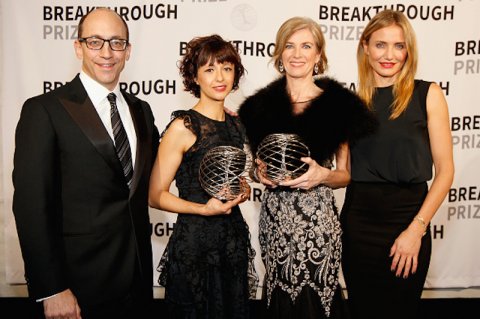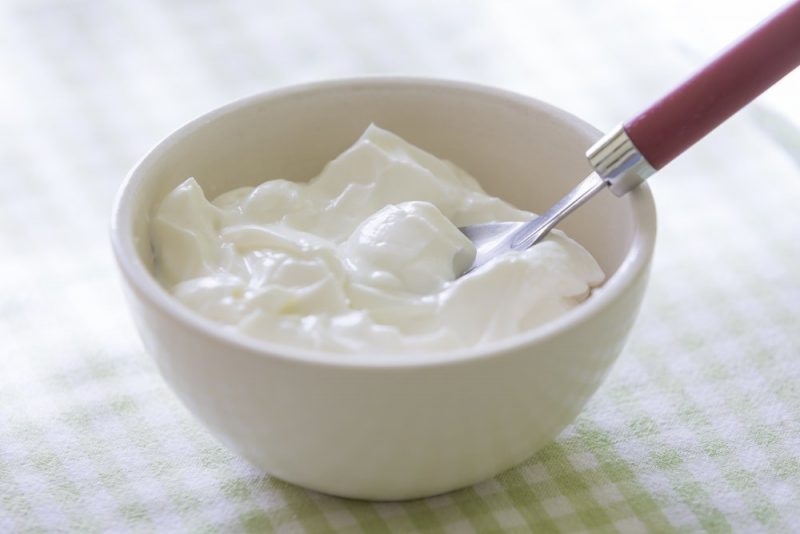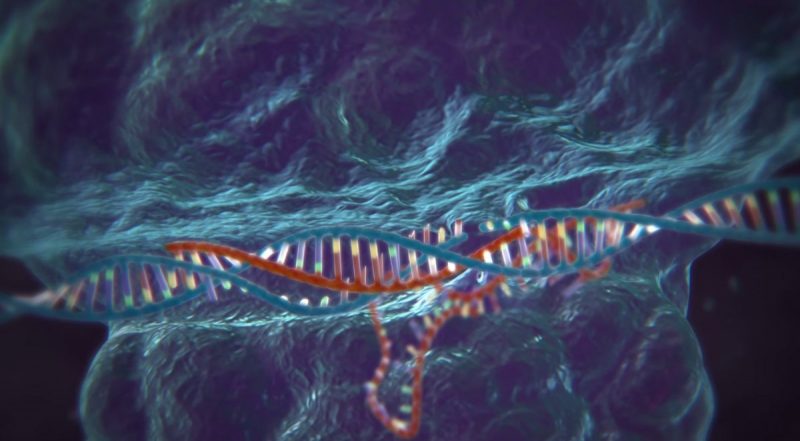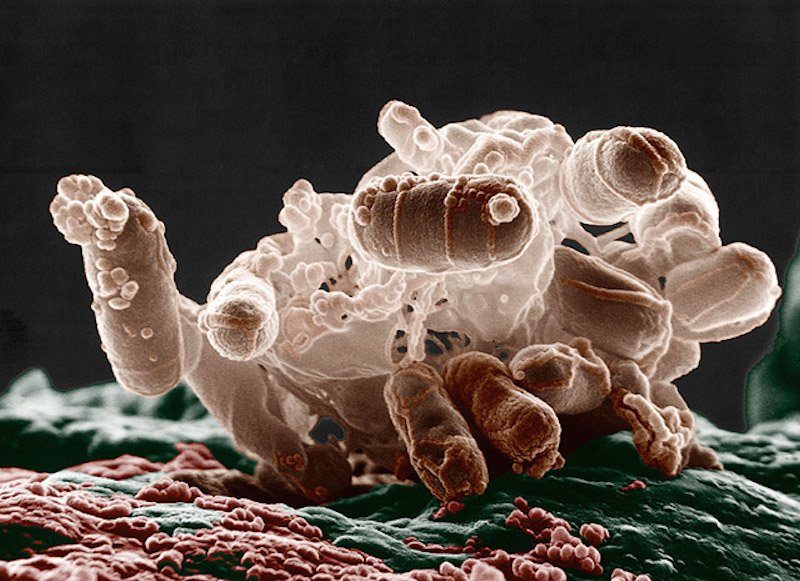
The biggest biotech discovery of the century is about to change medicine forever
On a November evening last year, Jennifer Doudna put on a stylish black evening gown and headed to Hangar One, a building at NASA’s Ames Research Center that was constructed in 1932 to house dirigibles.
Under the looming arches of the hangar, Doudna mingled with celebrities like Benedict Cumberbatch, Cameron Diaz and Jon Hamm before receiving the 2015 Breakthrough Prize in life sciences, an award sponsored by Mark Zuckerberg and other tech billionaires.
Excess Logic continues reposting interesting articles about hi-tech, startups and new technologies to draw attention to e-waste recycling of used computer, lab, test, data center, R&D, computer and electronic equipment. Please stop disposing of used equipment into a dumpster. Recycle used electronics with Excess Logic for free.
Doudna, a biochemist at the University of California, Berkeley, and her collaborator, Emmanuelle Charpentier of the Helmholtz Centre for Infection Research in Germany, each received $3 million for their invention of a potentially revolutionary tool for editing DNA known as CRISPR.
Doudna was not a gray-haired emerita being celebrated for work she did back when dirigibles ruled the sky.
It was only in 2012 that Doudna, Charpentier and their colleagues offered the first demonstration of CRISPR’s potential.
They crafted molecules that could enter a microbe and precisely snip its DNA at a location of the researchers’ choosing.
In January 2013, the scientists went one step further: They cut out a particular piece of DNA in human cells and replaced it with another one.
Read how to do ewaste recycling in San Jose, Milpitas, Santa Clara, Fremont
In the same month, separate teams of scientists at Harvard University and the Broad Institute reported similar success with the gene-editing tool.
A scientific stampede commenced, and in just the past two years, researchers have performed hundreds of experiments on CRISPR. Their results hint that the technique may fundamentally change both medicine and agriculture.
Some scientists have repaired defective DNA in mice, for example, curing them of genetic disorders. Plant scientists have used CRISPR to edit genes in crops, raising hopes that they can engineer a better food supply.
Some researchers are trying to rewrite the genomes of elephants, with the ultimate goal of re-creating a woolly mammoth.
Writing last year in the journal Reproductive Biology and Endocrinology, Motoko Araki and Tetsuya Ishii of Hokkaido University in Japan predicted that doctors will be able to use CRISPR to alter the genes of human embryos “in the immediate future.”
Thanks to the speed of CRISPR research, the accolades have come quickly. Last year MIT Technology Review called CRISPR “the biggest biotech discovery of the century.”
The Breakthrough Prize is just one of several prominent awards Doudna has won in recent months for her work on CRISPR; National Public Radio recently reported whispers of a possible Nobel in her future.
Even the pharmaceutical industry, which is often slow to embrace new scientific advances, is rushing to get in on the act. New companies developing CRISPR-based medicine are opening their doors.
In January, the pharmaceutical giant Novartis announced that it would be using Doudna’s CRISPR technology for its research into cancer treatments. It plans to edit the genes of immune cells so that they will attack tumors.
But amid all the black-tie galas and patent filings, it’s easy to overlook the most important fact about CRISPR: Nobody actually invented it.
Doudna and other researchers did not pluck the molecules they use for gene editing from thin air. In fact, they stumbled across the CRISPR molecules in nature.
Microbes have been using them to edit their own DNA for millions of years, and today they continue to do so all over the planet, from the bottom of the sea to the recesses of our own bodies.
We’ve barely begun to understand how CRISPR works in the natural world.
Microbes use it as a sophisticated immune system, allowing them to learn to recognize their enemies. Now scientists are discovering that microbes use CRISPR for other jobs as well.
The natural history of CRISPR poses many questions to scientists, for which they don’t have very good answers yet.

Steve Jennings/Getty ImagesJennifer A.
Read how to do biotech equipment recycling in San Jose, Milpitas, Mountain View, Santa Clara
Doudna was one of four winning researchers on the panel at the Breakthrough Prize Breakfast & Symposia on November 10, 2014 in Stanford, California.
But it also holds great promise. Doudna and her colleagues harnessed one type of CRISPR, but scientists are finding a vast menagerie of different types.
Tapping that diversity could lead to more effective gene editing technology, or open the way to applications no one has thought of yet.
“You can imagine that many labs — including our own — are busily looking at other variants and how they work,” Doudna said. “So stay tuned.”
A Repeat Mystery
The scientists who discovered CRISPR had no way of knowing that they had discovered something so revolutionary. They didn’t even understand what they had found. In 1987, Yoshizumi Ishino and colleagues at Osaka University in Japan published the sequence of a gene called iap belonging to the gut microbe E. coli.
To better understand how the gene worked, the scientists also sequenced some of the DNA surrounding it. They hoped to find spots where proteins landed, turning iap on and off. But instead of a switch, the scientists found something incomprehensible.
If you’ve eaten yogurt or cheese, chances are you’ve eaten CRISPR-ized cells.
Near the iap gene lay five identical segments of DNA. DNA is made up of building blocks called bases, and the five segments were each composed of the same 29 bases.
These repeat sequences were separated from each other by 32-base blocks of DNA, called spacers. Unlike the repeat sequences, each of the spacers had a unique sequence.
This peculiar genetic sandwich didn’t look like anything biologists had found before. When the Japanese researchers published their results, they could only shrug. “The biological significance of these sequences is not known,” they wrote.
It was hard to know at the time if the sequences were unique to E. coli, because microbiologists only had crude techniques for deciphering DNA.
But in the 1990s, technological advances allowed them to speed up their sequencing. By the end of the decade, microbiologists could scoop up seawater or soil and quickly sequence much of the DNA in the sample.
This technique — called metagenomics — revealed those strange genetic sandwiches in a staggering number of species of microbes. They became so common that scientists needed a name to talk about them, even if they still didn’t know what the sequences were for.
In 2002, Ruud Jansen of Utrecht University in the Netherlands and colleagues dubbed these sandwiches “clustered regularly interspaced short palindromic repeats” — CRISPR for short.
Jansen’s team noticed something else about CRISPR sequences: They were always accompanied by a collection of genes nearby. They called these genes Cas genes, for CRISPR-associated genes. The genes encoded enzymes that could cut DNA, but no one could say why they did so, or why they always sat next to the CRISPR sequence.
Three years later, three teams of scientists independently noticed something odd about CRISPR spacers. They looked a lot like the DNA of viruses.
“And then the whole thing clicked,” said Eugene Koonin.
At the time, Koonin, an evolutionary biologist at the National Center for Biotechnology Information in Bethesda, Md., had been puzzling over CRISPR and Cas genes for a few years. As soon as he learned of the discovery of bits of virus DNA in CRISPR spacers, he realized that microbes were using CRISPR as a weapon against viruses.
Koonin knew that microbes are not passive victims of virus attacks. They have several lines of defense. Koonin thought that CRISPR and Cas enzymes provide one more. In Koonin’s hypothesis, bacteria use Cas enzymes to grab fragments of viral DNA.
They then insert the virus fragments into their own CRISPR sequences. Later, when another virus comes along, the bacteria can use the CRISPR sequence as a cheat sheet to recognize the invader.
Scientists didn’t know enough about the function of CRISPR and Cas enzymes for Koonin to make a detailed hypothesis. But his thinking was provocative enough for a microbiologist named Rodolphe Barrangou to test it.
To Barrangou, Koonin’s idea was not just fascinating, but potentially a huge deal for his employer at the time, the yogurt maker Danisco.

Shutterstock
Danisco depended on bacteria to convert milk into yogurt, and sometimes entire cultures would be lost to outbreaks of bacteria-killing viruses. Now Koonin was suggesting that bacteria could use CRISPR as a weapon against these enemies.
To test Koonin’s hypothesis, Barrangou and his colleagues infected the milk-fermenting microbe Streptococcus thermophilus with two strains of viruses.
The viruses killed many of the bacteria, but some survived. When those resistant bacteria multiplied, their descendants turned out to be resistant too. Some genetic change had occurred.
Barrangou and his colleagues found that the bacteria had stuffed DNA fragments from the two viruses into their spacers. When the scientists chopped out the new spacers, the bacteria lost their resistance.
Barrangou, now an associate professor at North Carolina State University, said that this discovery led many manufacturers to select for customized CRISPR sequences in their cultures, so that the bacteria could withstand virus outbreaks. “If you’ve eaten yogurt or cheese, chances are you’ve eaten CRISPR-ized cells,” he said.
Cut and Paste
As CRISPR started to give up its secrets, Doudna got curious. She had already made a name for herself as an expert on RNA, a single-stranded cousin to DNA.
Originally, scientists had seen RNA’s main job as a messenger. Cells would make a copy of a gene using RNA, and then use that messenger RNA as a template for building a protein. But Doudna and other scientists illuminated many other jobs that RNA can do, such as acting as sensors or controlling the activity of genes.
In 2007, Blake Wiedenheft joined Doudna’s lab as a postdoctoral researcher, eager to study the structure of Cas enzymes to understand how they worked.
Doudna agreed to the plan — not because she thought CRISPR had any practical value, but just because she thought the chemistry might be cool. “You’re not trying to get to a particular goal, except understanding,” she said.
As Wiedenheft, Doudna and their colleagues figured out the structure of Cas enzymes, they began to see how the molecules worked together as a system. When a virus invades a microbe, the host cell grabs a little of the virus’s genetic material, cuts open its own DNA, and inserts the piece of virus DNA into a spacer.
As the CRISPR region fills with virus DNA, it becomes a molecular most-wanted gallery, representing the enemies the microbe has encountered. The microbe can then use this viral DNA to turn Cas enzymes into precision-guided weapons.
The microbe copies the genetic material in each spacer into an RNA molecule. Cas enzymes then take up one of the RNA molecules and cradle it.
Together, the viral RNA and the Cas enzymes drift through the cell. If they encounter genetic material from a virus that matches the CRISPR RNA, the RNA latches on tightly. The Cas enzymes then chop the DNA in two, preventing the virus from replicating.
As CRISPR’s biology emerged, it began to make other microbial defenses look downright primitive. Using CRISPR, microbes could, in effect, program their enzymes to seek out any short sequence of DNA and attack it exclusively.
“Once we understood it as a programmable DNA-cutting enzyme, there was an interesting transition,” Doudna said. She and her colleagues realized there might be a very practical use for CRISPR. Doudna recalls thinking, “Oh my gosh, this could be a tool.”
It wasn’t the first time a scientist had borrowed a trick from microbes to build a tool. Some microbes defend themselves from invasion by using molecules known as restriction enzymes. The enzymes chop up any DNA that isn’t protected by molecular shields.
The microbes shield their own genes, and then attack the naked DNA of viruses and other parasites. In the 1970s, molecular biologists figured out how to use restriction enzymes to cut DNA, giving birth to the modern biotechnology industry.
In the decades that followed, genetic engineering improved tremendously, but it couldn’t escape a fundamental shortcoming: Restriction enzymes did not evolve to make precise cuts — only to shred foreign DNA.
As a result, scientists who used restriction enzymes for biotechnology had little control over where their enzymes cut open DNA.
The CRISPR-Cas system, Doudna and her colleagues realized, had already evolved to exert just that sort of control.
To create a DNA-cutting tool, Doudna and her colleagues picked out the CRISPR-Cas system from Streptococcus pyogenes, the bacteria that cause strep throat. It was a system they already understood fairly well, having worked out the function of its main enzyme, called Cas9.
Doudna and her colleagues figured out how to supply Cas9 with an RNA molecule that matched a sequence of DNA they wanted to cut. The RNA molecule then guided Cas9 along the DNA to the target site, and then the enzyme made its incision.
Using two Cas9 enzymes, the scientists could make a pair of snips, chopping out any segment of DNA they wanted. They could then coax a cell to stitch a new gene into the open space.
Doudna and her colleagues thus invented a biological version of find-and-replace — one that could work in virtually any species they chose to work on.
As important as these results were, microbiologists were also grappling with even more profound implications of CRISPR. It showed them that microbes had capabilities no one had imagined before.
Before the discovery of CRISPR, all the defenses that microbes were known to use against viruses were simple, one-size-fits-all strategies. Restriction enzymes, for example, will destroy any piece of unprotected DNA. Scientists refer to this style of defense as innate immunity.
We have innate immunity, too, but on top of that, we also use an entirely different immune system to fight pathogens: one that learns about our enemies.
This so-called adaptive immune system is organized around a special set of immune cells that swallow up pathogens and then present fragments of them, called antigens, to other immune cells. If an immune cell binds tightly to an antigen, the cell multiplies.
The process of division adds some random changes to the cell’s antigen receptor genes. In a few cases, the changes alter the receptor in a way that lets it grab the antigen even more tightly. Immune cells with the improved receptor then multiply even more.
This cycle results in an army of immune cells with receptors that can bind quickly and tightly to a particular type of pathogen, making them into precise assassins. Other immune cells produce antibodies that can also grab onto the antigens and help kill the pathogen.
It takes a few days for the adaptive immune system to learn to recognize the measles virus, for instance, and wipe it out. But once the infection is over, we can hold onto these immunological memories. A few immune cells tailored to measles stay with us for our lifetime, ready to attack again.
CRISPR, microbiologists realized, is also an adaptive immune system. It lets microbes learn the signatures of new viruses and remember them.
And while we need a complex network of different cell types and signals to learn to recognize pathogens, a single-celled microbe has all the equipment necessary to learn the same lesson on its own.
But how did microbes develop these abilities? Ever since microbiologists began discovering CRISPR-Cas systems in different species, Koonin and his colleagues have been reconstructing the systems’ evolution.
CRISPR-Cas systems use a huge number of different enzymes, but all of them have one enzyme in common, called Cas1. The job of this universal enzyme is to grab incoming virus DNA and insert it in CRISPR spacers. Recently, Koonin and his colleagues discovered what may be the origin of Cas1 enzymes.
Along with their own genes, microbes carry stretches of DNA called mobile elements that act like parasites. The mobile elements contain genes for enzymes that exist solely to make new copies of their own DNA, cut open their host’s genome, and insert the new copy.

YouTube/McGovern Institute for Brain Research at MIT
Sometimes mobile elements can jump from one host to another, either by hitching a ride with a virus or by other means, and spread through their new host’s genome.
Koonin and his colleagues discovered that one group of mobile elements, called casposons, makes enzymes that are pretty much identical to Cas1.
In a new paper in Nature Reviews Genetics, Koonin and Mart Krupovic of the Pasteur Institute in Paris argue that the CRISPR-Cas system got its start when mutations transformed casposons from enemies into friends.
Their DNA-cutting enzymes became domesticated, taking on a new function: to store captured virus DNA as part of an immune defense.
While CRISPR may have had a single origin, it has blossomed into a tremendous diversity of molecules. Koonin is convinced that viruses are responsible for this. Once they faced CRISPR’s powerful, precise defense, the viruses evolved evasions.
Their genes changed sequence so that CRISPR couldn’t latch onto them easily. And the viruses also evolved molecules that could block the Cas enzymes. The microbes responded by evolving in their turn. They acquired new strategies for using CRISPR that the viruses couldn’t fight.
Over many thousands of years, in other words, evolution behaved like a natural laboratory, coming up with new recipes for altering DNA.
The Hidden Truth
To Konstantin Severinov, who holds joint appointments at Rutgers University and the Skolkovo Institute of Science and Technology in Russia, these explanations for CRISPR may turn out to be true, but they barely begin to account for its full mystery.
In fact, Severinov questions whether fighting viruses is the chief function of CRISPR. “The immune function may be a red herring,” he said.
Severinov’s doubts stem from his research on the spacers of E. coli. He and other researchers have amassed a database of tens of thousands of E. coli spacers, but only a handful of them match any virus known to infect E. coli.

Flickr/Eric Erbe/Christopher Pooley/USDAColorized low-temperature electron micrograph of a cluster of E. coli bacteria.
You can’t blame this dearth on our ignorance of E. coli or its viruses, Severinov argues, because they’ve been the workhorses of molecular biology for a century. “That’s kind of mind-boggling,” he said.
It’s possible that the spacers came from viruses, but viruses that disappeared thousands of years ago. The microbes kept holding onto the spacers even when they no longer had to face these enemies. Instead, they used CRISPR for other tasks.
Severinov speculates that a CRISPR sequence might act as a kind of genetic bar code. Bacteria that shared the same bar code could recognize each other as relatives and cooperate, while fighting off unrelated populations of bacteria.
But Severinov wouldn’t be surprised if CRISPR also carries out other jobs. Recent experiments have shown that some bacteria use CRISPR to silence their own genes, instead of seeking out the genes of enemies.
By silencing their genes, the bacteria stop making molecules on their surface that are easily detected by our immune system. Without this CRISPR cloaking system, the bacteria would blow their cover and get killed.
“This is a fairly versatile system that can be used for different things,” Severinov said, and the balance of all those things may differ from system to system and from species to species.
If scientists can get a better understanding of how CRISPR works in nature, they may gather more of the raw ingredients for technological innovations.
To create a new way to edit DNA, Doudna and her colleagues exploited the CRISPR-Cas system from a single species of bacteria, Streptococcus pyogenes.
There’s no reason to assume that it’s the best system for that application. At Editas, a company based in Cambridge, Massachusetts, scientists have been investigating the Cas9 enzyme made by another species of bacteria, Staphylococcus aureus.
In January, Editas scientists reported that it’s about as efficient at cutting DNA as Cas9 from Streptococcus pyogenes. But it also has some potential advantages, including its small size, which may make it easier to deliver into cells.
To Koonin, these discoveries are just baby steps into the ocean of CRISPR diversity. Scientists are now working out the structure of distantly related versions of Cas9 that seem to behave very differently from the ones we’re now familiar with. “Who knows whether this thing could become even a better tool?” Koonin said.
And as scientists discover more tasks that CRISPR accomplishes in nature, they may be able to mimic those functions, too. Doudna is curious about using CRISPR as a diagnostic tool, searching cells for cancerous mutations, for example. “It’s seek and detect, not seek and destroy,” she said.
But having been surprised by CRISPR before, Doudna expects the biggest benefits from these molecules to surprise us yet again. “It makes you wonder what else is out there,” she said.
Author CARL ZIMMER, QUANTA MAGAZINE
Permanent article address